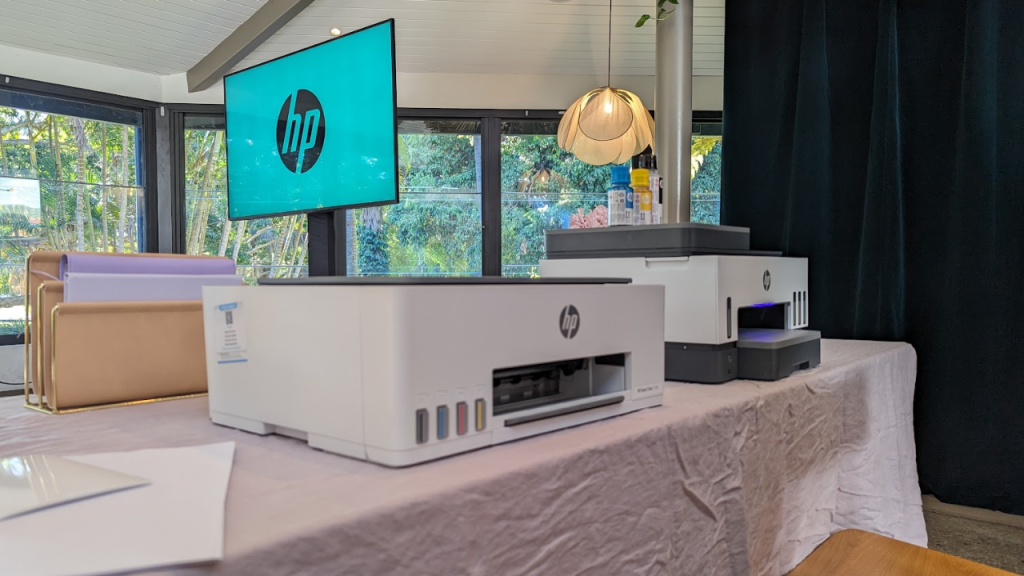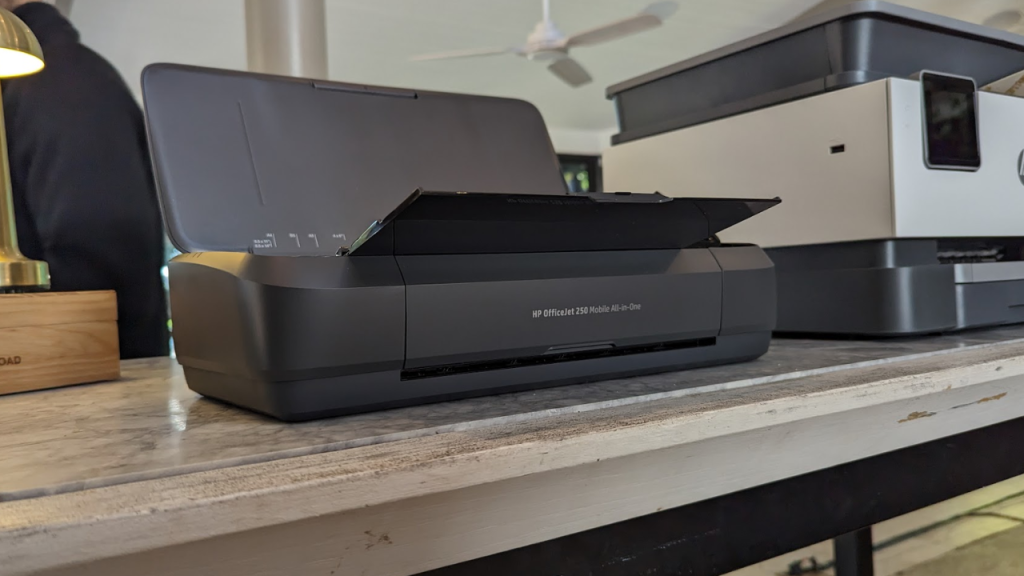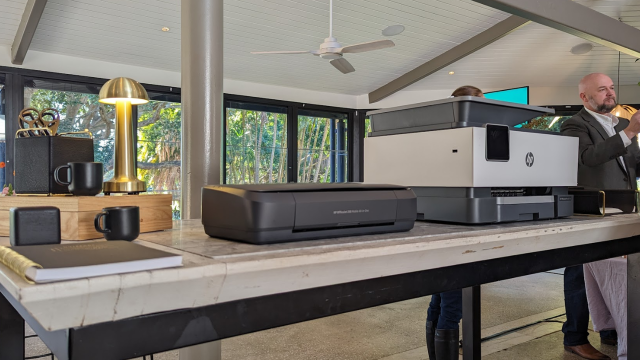I have never owned a printer, nor have I ever really felt the urge to own one, given that most of what I would print is largely handled digitally these days – movie and plane tickets can go on my phone, I don’t print anything for work, and if I want a photo done nicely, I’ll usually have it printed professionally. Assumingly like many people, It’s really only for loose ends that I need a printer, such as for physical documents or for return labels (like faulty products, or in my line of work, the return of review units).
Up until now, I’ve been happy using the printer at work for these loose ends, but thanks to HP, I’m starting to come to a point where I’m thinking of a printer as a ‘have it, and not need it’ thing, rather than ‘need it, and not have it’ – even if I’m living in a small apartment without much space to waste.
This week, HP launched its newest range of printers in Australia – additions to the ‘Smart Tank’ collection, which have a focus on bulk-filled ink in bottles rather than cartidges. HP’s billing these new printers as a sustainable solution that won’t need ink refills for a long time (up to between 6,000 black and 8,000 colour pages out of the box, in fact), built with 45 per cent post-consumer recycled content.
In debuting the product, the company knew that printers are a niche thing in the home, even with people working less and less at home since the height of the pandemic. They’re mostly for families, home workers, and for professional designers as major printer-owning demographics, but they can also fit into the kit of now-and-again users like me.

Take it from me, the guy who went to an event about printers; it’s difficult to make printers sound cool, and that’s something HP understands – so at least the company can make them as sustainable as possible, with as broad a target market as it can cater for.
The Smart Tank series ranges from $399 all the way up to $659 in Australia, with more expensive features adding on more things – stuff like scanning capability, double-sided printing, and integrated touch screens, but for me, I don’t need anything more than a basic printer for a small space. Each of these printers seem quite large, and try as I might, I don’t think I’m ever going to print anywhere near 6,000 pages (though I fully get that people would want this many – I recall printing a lot in high school).
Genuinely, the three most important things to me, if I’m to buy a printer, are affordability, sustainability, and the amount of space required – and it seems like HP has each of these down-pat.
Let me introduce you to my favourite printer HP showed off on the day – one that’s been on the market for a while, but one that I’m very interested in: the HP OfficeJet 250 Mobile All-In-One.

This thing isn’t cheap – it’s $529, but it’s also the smallest printer available in the HP range. It’s billed as a portable solution, which I’d agree with, because it could quite easily fold up and go in a laptop bag. I could put this anywhere in my apartment, and it folds up so neatly that it wouldn’t take up too much space. There are other small printers available through HP, in particular cheaper models in the ‘Envy’ range, but the OfficeJet 250 Mobile is, somehow, a sexy printer.
As far as sustainability goes, HP reckons the most sustainable thing you can do with its product range is sign up to its printer cartridge subscription service – Instant Ink – which launched in Australia in April 2021. It’s an interesting offering. If you surpass the allocated pages you’ve paid for with your subscription, you don’t need a new cartridge, but you will need to pay to continue to use said cartridge. HP Home Print Solutions category manager for Australia and New Zealand Ben Farmaner said the company would like printers to be as easy to use as toasters.
“We’re just trying to make printers seamless. We don’t want people to have to think about print,” Farmaner told Gizmodo Australia.
I actually really love the business model of Instant Ink. Pricing starts at $1.99 per month, which allows for up to 10 printed pages per month, with $1.99 getting you 10 extra pages.
The most expensive plan is $39.99 per month, which will allow for up to 700 pages. The cartridges are supplied via mail, and as you don’t own the cartridge, you return your old one to HP every time a new one comes. The used cartridge is recycled through Planet Ark, and ultimately, this subscription model can definitely save you money (with ink cartridges often costing between $9 and $310, depending on the model and type).
So here I am, scowering the HP website for a printer that would work size-wise and be cheap enough to justify owning. The HP website lists six printers between the $50 and $99 price points, all of which are eligible for the Instant Ink program. Dozens of printers are available above $99, with the company trying to cater for all kinds of homes.
Realistically, if I bundled a cheap printer (one that looked passably nice in my home) with the cheapest Instant Ink plan, I could make owning one work for me. There’s no commitment to pay for Instant Ink every month, so I wouldn’t need to pay for months where I’m not using the printer, but again, it solves those loose-ends issues without the need to use the Gizmodo Australia (Pedestrian) office printer.
HP has printer-pilled me. I can’t believe I’ve written this.
